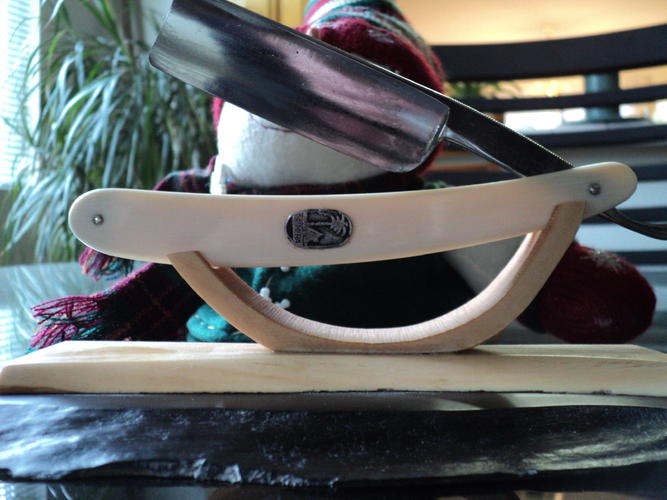Results 11 to 20 of 20
Thread: need help on this matters
-
01-23-2015, 06:07 PM #11

I will be posting some pictures of how to do it without power tools well at least the thinking out part. Well at least in theory.
-
01-23-2015, 06:08 PM #12I used Nakayamas for my house



- Join Date
- Aug 2009
- Location
- Des Moines
- Posts
- 8,664
- Blog Entries
- 1
Thanked: 2591
-
01-23-2015, 06:09 PM #13

I will just give me a minute
-
01-23-2015, 06:18 PM #14

Ok so let's pretend that you shaped your scales according to this video
http://youtu.be/YQm7YToDSpc
But you have some horn or you bought some oak from Lowe's like this one
http://www.lowes.com/ProductDisplay?...llow&cId=PDIO1
-
01-23-2015, 06:23 PM #15Senior Member


- Join Date
- Jan 2011
- Location
- Roseville,Kali
- Posts
- 10,432
Thanked: 2027
I just re-scaled this is real Ivory (MY Blade) Ivory is heavy so I make them no more than .080 in thick,are almost translucent.
 CAUTION
CAUTION
Dangerous within 1 Mile
-
01-23-2015, 06:24 PM #16

The easiest way to do it requires a sanding block and some 100 grit paper and double sided tape.
Use the doble sided tape to hold the scale on a flat surface
-
01-23-2015, 06:25 PM #17

Put some sand paper on your sanding block and get to work; back and forth, back and forth.
-
01-23-2015, 06:30 PM #18

Here is an extra tip to smooth out the concave curve on the scales. Flip the sand paper so you get a curved sanding surface and smooth out your curves. This actually works better here than in a power sander
-
The Following User Says Thank You to rocarule For This Useful Post:
mainaman (01-23-2015)
-
01-23-2015, 06:35 PM #19

In some materials you get an extra the thinner the scale like in pixelfixed example of ivory, and the something could be done with bone
-
01-23-2015, 06:40 PM #20I used Nakayamas for my house



- Join Date
- Aug 2009
- Location
- Des Moines
- Posts
- 8,664
- Blog Entries
- 1
Thanked: 2591
rocarule, thanks for the tips, I hope they will help the OP with their project.
Stefan


 3Likes
3Likes LinkBack URL
LinkBack URL About LinkBacks
About LinkBacks






 Reply With Quote
Reply With Quote
